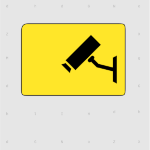Dickimaw Books Blog 
Clouds, Cookies and Migration Part 2: Clouds 🔗

Once upon a time, a little parrot decided to migrate across the vast ocean to the cloud lands, with nothing more than a handful of cookies.
The previous post described why I decided to migrate to a new web hosting provider, TSO Host. I had the choice between their cPanel account and their cloud account. I opted for the cloud account.
The term “cloud computing” or “in the cloud” can conjure up a fluffy image of data floating around in the air. It’s actually far more down-to-earth and basically entails a bunch of computers in a data centre that are on 24/7 so that the data on them can be accessed across the world at any time in any time zone.
Imagine a computer without a monitor, keyboard or mouse (because it’s only accessed remotely). It’s a server or, rather, has a server process running on it. This is a bit of a simplification, but in this case the server essentially serves up files on request (provided access is permitted). Now imagine that computer sitting on a rack full of other computers. Imagine row upon row upon row of these racks, filling up the entire room. All whirring away because obviously they have to be on all the time. They’re using up electricity and generating heat ― far too much heat, so they have to be cooled. Those devices could be storing private data, such as company documents or your personal photos, or they could be storing the files that make up a website. These data centres not only need to be protected from hacking they also need to be protected from physical intrusion (i.e. burglary).
In that sense, the cPanel shared hosting account is also cloud computing. The files that make up the web site are all contained on a single server in a data centre. The cloud web hosting provided by TSO Host is a particular type of cloud computing that uses a cluster server where the files that make up the web site are synchronized across multiple servers. This makes the web site more reliable. If one device goes down, the others in the cluster can keep the site on-line.
In the end, I decided on the cloud account and opted for the free migration help when I signed up. The migration team copied over all mail accounts, databases and the contents of the public_html directory from my account on Hostgator’s server. I had some files outside of that directory but they were small by comparison, and it was easy enough for me to archive them and copy them over.
There are pros and cons with the cloud cluster verses the cPanel single server. The cloud has a far simpler dashboard with a very primitive text file editor. This isn’t normally a problem for me as I mostly use the secure shell (ssh) to access my files so I can edit them with vi or vim. It’s necessary to first activate ssh, and you have to wait about 15 minutes after activating it before logging in. I then deactivate ssh after I’ve finished.
I had the choice of migrating my SSL certificate (for a fee) but it was less than a month from its expiry date so I didn’t bother. Instead I switched to Let’s Encrypt which is available for both the cPanel and cloud accounts. Unfortunately, the cloud account doesn’t support Let’s Encrypt for sub-domains. Apparently it is supported for sub-domains on cPanel. The TSO Host support staff said I could switch to cPanel if I preferred but, after considering it, I decided not to bother. My website is small enough not to really need sub-domains and I hadn’t advertised the intended change, so I moved the shop back to its original location.
For about a week I had my website files on both the Hostgator server and the TSO Host cluster while I made all the necessary changes. If you visited the site during that time you would’ve been viewing the old files on the Hostgator server.
The first thing I had to do was change any absolute paths. With the cPanel server, the home directory is usually in the form /home/username but with the cluster the home directory varies depending on which device in the cluster you’re on. For most of the scripts I could obtain the path from the DOCUMENT_ROOT server setting. With osCommerce (used by the on-line store), the configuration file conveniently defines a constant that stores the shop’s path so that just required a minor edit to reference DOCUMENT_ROOT, but there were also a few absolute paths stored in the shop’s database, such as the location of the public and private key (used to encrypt the order information sent to PayPal). I modified the software to allow me to store relative paths in the database instead. The only place that I now have a hard-coded absolute path (to a specific device in the cluster) is in the .htaccess files. I haven’t found any way around this.
The other changes I needed to make was to update my PHP files to work with PHP 7.3 as they were previously running on an older version and contained deprecated commands. With TSO Host I have the option to switch to an older version, such as PHP 5.4, which I did initially to ensure the scripts worked, but obviously it’s better to use the latest version, which comes with extra security measures. Once I’d finished making the necessary modifications I switched to PHP 7.3.
You might be wondering what happened to my Perl CGI scripts that I mentioned in my previous post. It turns out they don’t work here either. The missing modules are still missing, but at least I’m now getting an understandable error message from cpan: I don’t have permission to install them. Perhaps they’re not pre-installed because they’re now obsolete or have vulnerabilities or haven’t been vetted. Anyway, I’ve now decided that I’d rather use PHP which provides the necessary functions that those scripts require without the need to depend on extra libraries or modules. All those Perl scripts should now automatically redirect to the new PHP replacements.
Once I’d made all the modifications necessary to make the site work on the new cloud server cluster it was time to change the nameservers. (Basically, when you type an address into your web browser it has to ask the nameserver for directions.) After the switch was made, I then went back to my Hostgator account and deleted all files, databases etc because I’m paranoid tidy before closing my account.
Since then I’ve been working on the remaining new PHP scripts in between a lot of travelling and other commitments. I also installed WordPress. This was easy to do from the cloud dashboard, and the installation tool sensibly chose not to use stupidly obvious admin or database names (they seem to just be randomly generated strings). My plan is to republish the articles from my old blog here, although I may omit any time-sensitive information (such as giveaways that have now closed).
WordPress isn’t as easy to tinker with as osCommerce. For example, osCommerce has a constant defined in the configuration file that has the relative path to the admin directory. This makes it really easy to rename. WordPress, on the other hand, hard-codes the relative admin path. While it’s technically possible to alter this by editing all the files that reference this path, the changes will be lost when upgrading to a new version. Whilst one shouldn’t rely on obscurity as the only form of defence, there’s no point in making things too obvious. (Consider the Lonely Mountain in “The Hobbit”. The hidden door could only be unlocked with a key at a certain time, but that didn’t mean the dwarves went around putting up signs saying “secret entrance this way”.) There are, however, security plugins that restrict the number of login attempts etc.
Both osCommerce and WordPress have the database credentials in a configuration file within their installation paths. This is normally protected from public viewing by the server settings, but an accidental mis-edit or deletion of the .htaccess files could cause the contents of those configuration files to be shown as plain text, exposing the credentials (user name, password, database name etc). So I’ve moved them out of those configuration files to a location that can’t be accessed by a browser.
I’ve added some new PHP scripts that have replaced static pages, such as the gallery that’s now searchable, the book page and the site map. The “new book alert” Perl CGI script has been replaced with the more general book list. There have been a few glitches, but hopefully they’re all now fixed, and there are some more updates still to do but the main scripts are done.
With my previous web hosting company, this site had one strictly necessary cookie for the online store. The new cloud account has a second strictly necessary cookie. These cookies will be discussed in the next post.
Next Post
Previous Post
 Once upon a time, a little parrot decided to migrate across the vast ocean to the cloud lands, with nothing more than a handful of cookies. The Dickimaw Books site has migrated to a new web hosting provider and this is the story of its journey.
Once upon a time, a little parrot decided to migrate across the vast ocean to the cloud lands, with nothing more than a handful of cookies. The Dickimaw Books site has migrated to a new web hosting provider and this is the story of its journey.
Recent Posts
 There are a growing number of digital historians who are interested in documenting old computing systems from the twentieth century, but much of the information has been lost and coincident names can make it hard to search. This article is about the RISC OS ARMTeX distribution, which provided TeX and LaTeX for the ARM-powered Acorn computers in the 1990s.
There are a growing number of digital historians who are interested in documenting old computing systems from the twentieth century, but much of the information has been lost and coincident names can make it hard to search. This article is about the RISC OS ARMTeX distribution, which provided TeX and LaTeX for the ARM-powered Acorn computers in the 1990s. The DRM-free ebook retailer SmashWords has its annual Summer/Winter sale from 1st – 31st July 2025. My crime novel “The Private Enemy” and children’s illustrated story “The Foolish Hedgehog” both have a 50% discount, and my crime fiction short stories “I’ve Heard the Mermaid Sing”, “Unsocial Media”, “Smile for the Camera”, and “The Briefcase” have a 100% discount (i.e. free!) for the duration of the sale. Did you know that you can gift ebooks on SmashWords?
The DRM-free ebook retailer SmashWords has its annual Summer/Winter sale from 1st – 31st July 2025. My crime novel “The Private Enemy” and children’s illustrated story “The Foolish Hedgehog” both have a 50% discount, and my crime fiction short stories “I’ve Heard the Mermaid Sing”, “Unsocial Media”, “Smile for the Camera”, and “The Briefcase” have a 100% discount (i.e. free!) for the duration of the sale. Did you know that you can gift ebooks on SmashWords? If you have read my short story Smile for the Camera, did you notice that the ending could have two possible interpretations? (No spoilers please!) As a writer, it’s always difficult to tell if something is too obvious or too obscure. If you need a hint, consider the naming scheme and remember that not everyone is what they say or imply that they are.
If you have read my short story Smile for the Camera, did you notice that the ending could have two possible interpretations? (No spoilers please!) As a writer, it’s always difficult to tell if something is too obvious or too obscure. If you need a hint, consider the naming scheme and remember that not everyone is what they say or imply that they are. The Ex-Cathedra writing group were delighted to present a cheque for £1,400 to St Martins Housing Trust during their collection at Tesco Harford Bridge on 6th December 2024. The money was raised from sales of the book Tales for Our Times, an anthology of short stories written by the group. The cheque was received by Ian Hanwell on behalf of St Martins. Many thanks to the support of everyone who purchased a copy and to the staff at Tesco Harford Bridge for allowing us to make the presentation there.
The Ex-Cathedra writing group were delighted to present a cheque for £1,400 to St Martins Housing Trust during their collection at Tesco Harford Bridge on 6th December 2024. The money was raised from sales of the book Tales for Our Times, an anthology of short stories written by the group. The cheque was received by Ian Hanwell on behalf of St Martins. Many thanks to the support of everyone who purchased a copy and to the staff at Tesco Harford Bridge for allowing us to make the presentation there. Search Blog
📂 Categories
- Autism
- Books
- Children’s Illustrated Fiction
- Illustrated fiction for young children: The Foolish Hedgehog and Quack, Quack, Quack. Give My Hat Back!
- Creative Writing
- The art of writing fiction, inspiration and themes.
- Crime Fiction
- The crime fiction category covers the crime novels The Private Enemy and The Fourth Protectorate and also the crime short stories I’ve Heard the Mermaid Sing and I’ve Heard the Mermaid Sing.
- Fiction
- Fiction books and other stories.
- Language
- Natural languages including regional dialects.
- (La)TeX
- The TeX typesetting system in general or the LaTeX format in particular.
- Music
- Norfolk
- This category is about the county of Norfolk in East Anglia (the eastern bulgy bit of England). It’s where The Private Enemy is set and is also where the author lives.
- RISC OS
- An operating system created by Acorn Computers in the late 1980s and 1990s.
- Security
- Site
- Information about the Dickimaw Books site.
- Software
- Open source software written by Nicola Talbot, which usually has some connection to (La)TeX.
- Speculative Fiction
- The speculative fiction category includes the novel The Private Enemy (set in the future), the alternative history novel The Fourth Protectorate, and the fantasy novel Muirgealia.
🔖 Tags
- Account
- Alternative History
- Sub-genre of speculative fiction, alternative history is “what if?” fiction.
- book samples
- Bots
- Conservation of Detail
- A part of the creative writing process, conservation of detail essentially means that only significant information should be added to a work of fiction.
- Cookies
- Information about the site cookies.
- Dialect
- Regional dialects, in particular the Norfolk dialect.
- Docker
- Education
- The education system.
- Ex-Cathedra
- A Norfolk-based writing group.
- Fantasy
- Sub-genre of speculative fiction involving magical elements.
- File formats
- Hippochette
- A pochette (pocket violin) with a hippo headpiece.
- History
- I’ve Heard the Mermaid Sing
- A crime fiction short story (available as an ebook) set in the late 1920s on the RMS Aquitania. See the story’s main page for further details.
- Inspirations
- The little things that inspired the author’s stories.
- Linux
- Migration
- Posts about the website migration.
- Muirgealia
- A fantasy novel. See the book’s main page for further details.
- News
- Notifications
- Online Store
- Posts about the Dickimaw Books store.
- Quack, Quack, Quack. Give My Hat Back!
- Information about the illustrated children’s book. See the book’s main page for further details.
- Re-published
- Articles that were previously published elsewhere and reproduced on this blog in order to collect them all together in one place.
- Sale
- Posts about sales that are running or are pending at the time of the post.
- Site settings
- Information about the site settings.
- Smile for the Camera
- A cybercrime short story about CCTV operator monitoring a store’s self-service tills who sees too much information.
- Story creation
- The process of creating stories.
- TeX Live
- The Briefcase
- A crime fiction short story (available as an ebook). See the story’s main page for further details.
- The Foolish Hedgehog
- Information about the illustrated children’s book. See the book’s main page for further details.
- The Fourth Protectorate
- Alternative history novel set in 1980s/90s London. See the book’s main page for further details.
- The Private Enemy
- A crime/speculative fiction novel set in a future Norfolk run by gangsters. See the book’s main page for further details.
- Unsocial Media
- A cybercrime fiction short story (available as an ebook). See the story’s main page for further details.
- World Book Day
- World Book Day (UK and Ireland) is an annual charity event held in the United Kingdom and the Republic of Ireland on the first Thursday in March. It’s a local version of the global UNESCO World Book Day.
- World Homeless Day
- World Homeless Day is marked every year on 10 October to draw attention to the needs of people experiencing homelessness.

